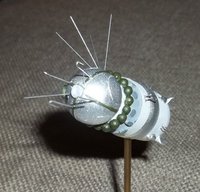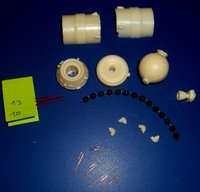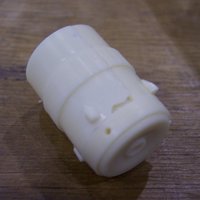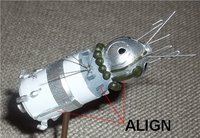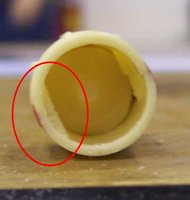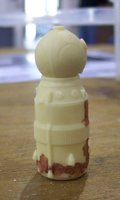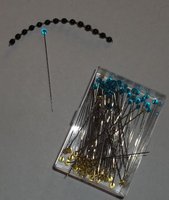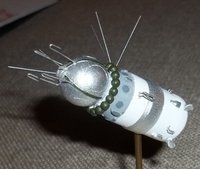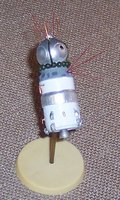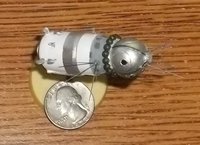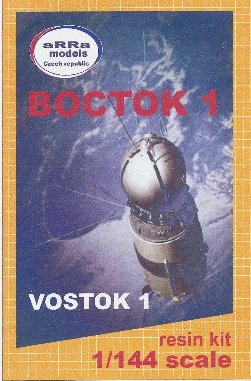
aRRa 1/144 Vostok
By Don Joy
Background
A total of 8 Vostok 3KA spacecraft were flown, 6 of them with a human crew.
Wikipedia entry for the Vostok spacecraft
Building
Painting & Final Construction
When the paint was all dry, I attached all the various antennae using super glue gel. Seven wire antennae are provided, pre-shaped. My piece #12 that I thought was missing re-appeared, so I did not have to make a replacement. The nylon "whiskers" comprise the remainder of the antennae suit and are pre-cut to length, so make sure the short ones go on the front. Again, you will have to check references for the alignment of all of these.
Conclusion
This was a nice little build and the length of time it took me for completion
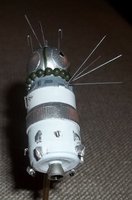
There are some construction challenges posed by the small size of the kit, but it is quite buildable and provides a very nice finished product. Total build time was probably 20-25 hours, not counting bead searching. I certainly recommend the kit to anyone with an interest in the subject in this scale.
My thanks to aRRa for the review kit.
